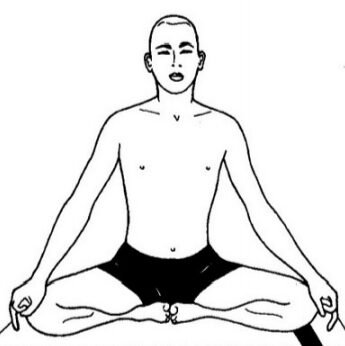What is so special about sitting?
What is so special about sitting? Nothing, when we speak of the way we ordinarily sit. It’s just one convenient way our bodies take a load off our feet. But sitting is very special when it comes to meditation. You can know that superficially easily enough from the outside. For instance, you might not know that a person is meditating when you see him standing or lying down, or walking, but you know it immediately when he is sitting,-especially if he is sitting on the floor. From any angle, the posture itself embodies wakefulness, even when the eyes are closed and the face is serene and peaceful. It is mountainlike in its majesty and solidity. There is a stability to it which speaks volumes, broadcasting inwardly and outwardly.
The moment the person dozes off, all these qualities evaporate. The mind collapses inwardly, the body visibly. Sitting meditation involves sitting in an upright, dignified posture, often for extended periods of time. While it is relatively easy to assume an erect posture, that is just the beginning of this challenging process of continual unfolding. You may readily enough “park” your body, but there is still the question of what the mind is up to. Sitting meditation is not a matter of taking on a special body posture, however powerful that may be. It is adopting a particular posture toward the mind. It is mind sitting. Once you are sitting, there are many ways to approach the present moment. All involve paying attention on purpose, non-judgmentally. What varies is what you attend to and how.
It is best to keep things simple and start with your breathing, feeling it as it moves in and out. Ultimately, you can expand your awareness to observe all the comings and goings, the gyrations and machinations of your own thoughts and feelings, perceptions and impulses, body and mind. But it may take some time for concentration and mindfulness to become strong enough to hold such a wide range of objects in awareness without getting lost in them or attached to particular ones, or simply overwhelmed. For most of us, it takes years and depends a good deal on your motivation and the intensity of your practice. So, at the beginning, you might want to stay with the breath, or use it as an anchor to bring you back when you are carried away. Try it for a few years and see what happens.
TRY:
- Setting aside a time every day for just being. Five minutes would be fine, or ten or twenty or thirty if you want to venture that far.
- Sit down and watch the moments unfold, with no agenda other than to be fully present.
- Use the breath as an anchor to tether your attention to the present moment. Your thinking mind will drift here and there, depending on the currents and winds moving in the mind until, at some point, the anchor line grows taut and brings you back. This may happen a lot.
- Bring your attention back to the breath, in all its vividness, every time it wanders. Keep the posture erect but not stiff. Think of yourself as a mountain.
Taking Your Seat

It helps to come to the cushion or to the chair with a definite sense of taking your seat. Sitting meditation is different from just sitting down casually
somewhere. There is energy in the statement the sitting makes as you take your seat, both in the choice of spot, and in mindfulness filling your body.
The posture embodies a stand, as in “taking a stand,” even though you are sitting. There is a strong sense of honoring place and placement of body and mind and moment. We take our seat to meditate keeping all this in mind, yet without any investment in location or posture. There may indeed be definite “power spots” indoors and out, yet with this attitude of taking a stand, you can sit anywhere in any posture and be at home. When your mind and body collaborate in holding body, time, place, and posture in awareness, and remain unattached to having it have to be a certain way, then and only then are you truly sitting.
-His Holiness Swami Advaitananda

Give a Reply